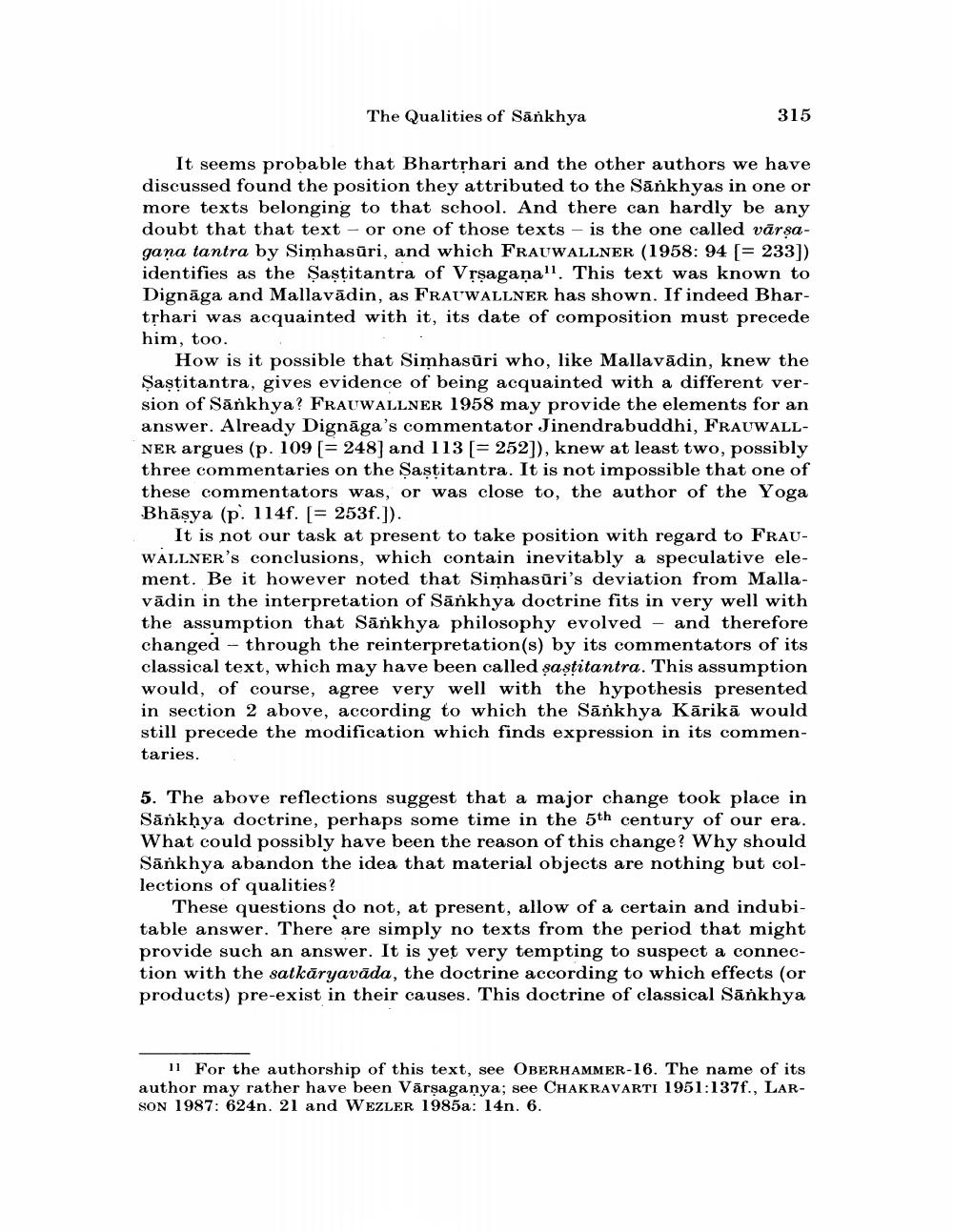________________
The Qualities of Sānkhya
315
It seems probable that Bhartrhari and the other authors we have discussed found the position they attributed to the Sankhyas in one or more texts belonging to that school. And there can hardly be any doubt that that text - or one of those texts – is the one called vārsagana tantra by Simhasūri, and which FRAUWALLNER (1958: 94 [= 233]) identifies as the Şastitantra of Vrşaganall. This text was known to Dignāga and Mallavādin, as FRAUWALLNER has shown. If indeed Bhartrhari was acquainted with it, its date of composition must precede him, too.
How is it possible that Simhasūri who, like Mallavādin, knew the Sastitantra, gives evidence of being acquainted with a different version of Sankhya? FRAUWALLNER 1958 may provide the elements for an answer. Already Dignāga's commentator Jinendrabuddhi, FRAUWALLNER argues (p. 109 [= 248] and 113 [= 252]), knew at least two, possibly three commentaries on the Şaştitantra. It is not impossible that one of these commentators was, or was close to, the author of the Yoga Bhāsya (p. 114f. [= 253f.]).
It is not our task at present to take position with regard to FRAUWALLNER's conclusions, which contain inevitably a speculative element. Be it however noted that Simhasüri's deviation from Mallavādin in the interpretation of Sānkhya doctrine fits in very well with the assumption that Sankhya philosophy evolved – and therefore changed - through the reinterpretation(s) by its commentators of its classical text, which may have been called şastitantra. This assumption would, of course, agree very well with the hypothesis presented in section 2 above, according to which the Sankhya Kārikā would still precede the modification which finds expression in its commentaries.
5. The above reflections suggest that a major change took place in Sankhya doctrine, perhaps some time in the 5th century of our era. What could possibly have been the reason of this change? Why should Sankhya abandon the idea that material objects are nothing but collections of qualities?
These questions do not, at present, allow of a certain and indubitable answer. There are simply no texts from the period that might provide such an answer. It is yet very tempting to suspect a connection with the satkāryavāda, the doctrine according to which effects (or products) pre-exist in their causes. This doctrine of classical Sānkhya
11 For the authorship of this text, see OBERHAMMER-16. The name of its author may rather have been Vārşaganya, see CHAKRAVARTI 1951:137f., LARSON 1987: 624n. 21 and WEZLER 1985a: 14n. 6.




